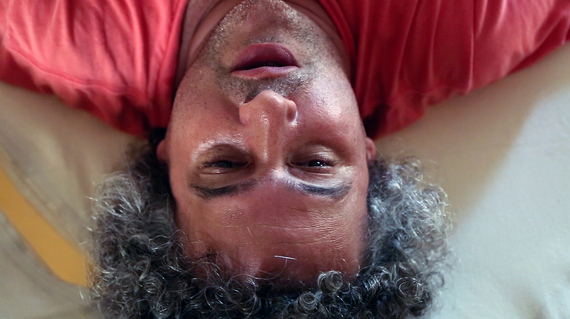Ernesto Neto is an artist comfortable in himself. So comfortable in fact, he managed to dose off during our shoot in his studio in Rio de Janeiro. We blamed it on the heat and not our company of course.
When awake, the artist was lively and outspoken, and this sense of self-assuredness is not surprising given his creative success over the years.
Known for his biomorphic sculptural environments, he was originally inspired by the Brazilian Neo-Concrete movement in the 1950s and 1960s which saw him develop his signature nylon sacks filled with a variety of materials including sand. His work is exhibited at Tate London and MoMA among others and he represented Brazil during the 2001 Venice Biennale.
His minimalist work is made accessible through its call for interaction. Viewers are encouraged to poke, mould and in some instances walk through the pieces.
During the sticky afternoon that we spent with Neto in his studio he told a story about watching his son take his first steps only a few feet away from where we were sitting to help bring to life his interest in gravity -- one of the prevalent themes in his work. The story also demonstrated his respect for simplicity.
His believe in keeping things simple, or perhaps subtle extends to his opinions on politics in art. In our interview Neto comments on art being too political, too in your face. Perhaps this is a hangover from the times he has lived through post-dictatorship in the late eighties and as a result of social unrest in the lead up to the World Cup over the last 18 months. Regardless, his message was clear: art is political without trying to make it political.

